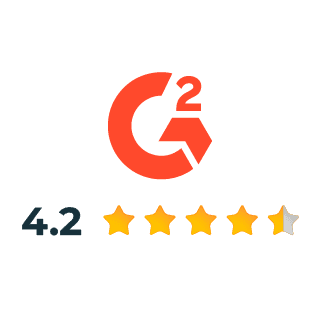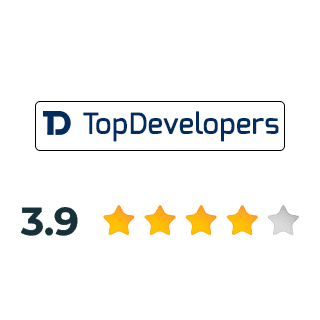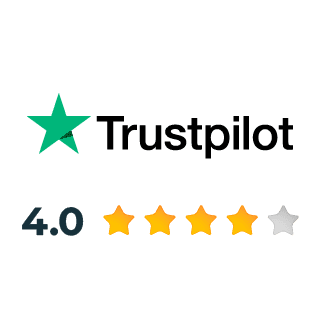Custom Software Development Company in Mumbai
Our cutting-edge custom software development technologies help startups and SMBs grow, enhance digital capabilities, increase efficiency, boost revenue, and cut costs through shared infrastructure models.
60 mins On-Demand Software Expert
1 Week Risk-Free Trials
Fast Onboard, Only if Satisfied
Save 40% On Development Cost & Time
Proven Track Record
Global Clients
We Have Completed
Strong Developers
Custom Software Development Company
Nimap Infotech is a leading custom software development company based in Mumbai, India, renowned for delivering innovative, technology-driven solutions to businesses worldwide. We specialize in creating customized software that aligns with our clients’ unique goals, driving efficiency, scalability, and growth across various industries. Our expertise ensures solutions that empower organizations to thrive in a competitive landscape.
Our team of highly skilled software developers, ui/ux designers, and technology experts from Mumbai is dedicated to delivering exceptional results. We excel at transforming complex business challenges into seamless, user-friendly, and high-performing software solutions. Whether it’s web app development, mobile apps, or enterprise software, we execute every project with precision, clarity, and a commitment to quality.
What sets us apart is our client-centric approach and constant focus on timely delivery. We guarantee punctual project completion without compromising quality, offering high-quality custom software development services to automate operations, boost efficiency, and enhance productivity. Regardless of your needs, we develop solutions tailored to your technical specifications.
By combining technical expertise with a deep understanding of business needs, Nimap Infotech has become a trusted partner for reliable and innovative software solutions. Partner with us to experience the difference of working with a company that prioritizes your success. Contact us today to achieve your business goals.
Our Global Clients











Our Startup Clients







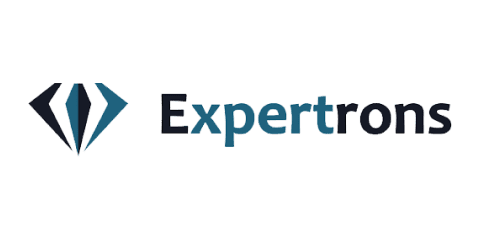



Our Enterprise Clients






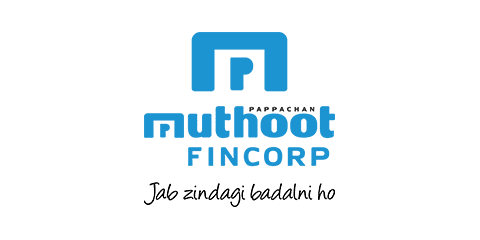

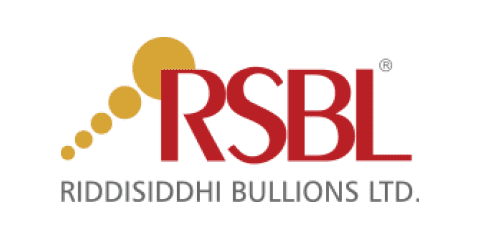

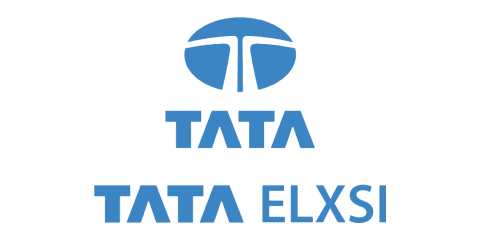








With a Proven Track Record of Delivering Innovative Solutions, We Are No 1 Custom Software Company
Enhance Your Operations With Our Tailored Software Solutions Designed To Meet Your Exact Needs.
Software Development Support
At Nimap Infotech, we provide comprehensive software development support services designed to enhance system performance, ensure reliability, and drive business growth. As a leading custom software development company, we offer a wide range of services, including consulting, optimization, maintenance, and patch management, to help businesses overcome technical challenges and achieve their goals.
Software Development Consulting
Our expert consultants work closely with you to understand your business needs and provide tailored solutions. From project planning and technical advisory to development strategy, we ensure your software solutions are scalable, efficient, and aligned with your specific requirements. Let us help you overcome technical challenges and transform your ideas into reality.
Performance Optimization
We specialize in diagnosing and resolving system issues to enhance scalability, improve workflows, and boost overall performance. Our performance tuning and system optimization services ensure your applications operate at peak efficiency, delivering maximum productivity and a seamless user experience.
Software Maintenance Services
Nimap Infotech offers end-to-end software maintenance services, including application lifecycle management, bug fixes, and system updates. Our proactive approach ensures system reliability, addresses evolving business needs, and maintains optimal functionality for your software applications.
Patch Management Services and Updates
We provide comprehensive patch management services to keep your systems secure and up-to-date. Our team deploys timely security updates, vulnerability fixes, and software patches to enhance system security, maintain compliance, and protect your business from potential threats or disruptions.
AI-Powered Custom Software Development Services
At Nimap Infotech, we harness the power of AI to deliver cutting-edge solutions, ensuring your business stays ahead in today’s competitive landscape. If you aim to transform your business with premium custom software development services in Mumbai, Nimap Infotech is your loyal supporter.

AI-Powered Software Development at Nimap Infotech
- We offer AI-powered software development services, integrating AI technologies to boost efficiency and innovation.
- Our solutions simplify development processes, automate tasks, and deliver tailored applications using advanced AI algorithms.
- Expertise in predictive analytics and seamless user experiences to drive growth and success for your business.
Generative AI Software Development
- Specialize in generative AI solutions for content creation, marketing, and product design.
- Deliver high-quality, AI-generated content tailored to industry-specific requirements.
AI Mobile App Development
- Enhance mobile apps with AI-driven innovation and efficiency.
- Features include intelligent task allocation, automated testing, and predictive planning.
- Utilize NLP for simplified documentation and improved communication.
- Offer smart resource management, auto-scaling, and fault tolerance for cloud-native mobile applications.
AI Cloud Application Development
- Develop AI-powered cloud-native applications using ML, DL, and NLP.
- Optimize resource management, auto-scaling, and fault tolerance for superior performance.
- Streamline deployment with AI-driven load balancing and enhanced security through AI-powered threat detection.
Robotics Process Automation (RPA)
- Automate repetitive tasks with AI-powered RPA solutions.
- Leverage ML, DL, NLP, and computer vision to improve efficiency and reduce errors.
- Deliver scalable, cost-effective automation tailored to your business workflows.
Predictive Analytics
- Provide AI-driven predictive analysis for informed decision-making.
- Use advanced AI algorithms to deliver accurate forecasts and actionable insights.
- Help businesses optimize performance, mitigate risks, and identify growth opportunities.
Our Business Collaboration Models
At Nimap Infotech, we specialize in delivering custom software development solutions tailored to your business needs, ensuring innovation, efficiency, and growth. Partner with us for world-class custom software development services in Mumbai, Pune & Hyderabad India.

Managed Delivery Autonomous Squads at Nimap Infotech
Our dedicated team handles development, analysis, and quality assurance in well-defined, specific roles. We manage autonomous squads while you focus on scope, product backlog, scheduling, and feature prioritization. Offering custom software development services in India, we ensure efficient and streamlined project execution.
Expertise in Crafting Custom Solutions for Various Industries
At Nimap Infotech, we are a trusted custom software development company with a proven track record of delivering tailored software solutions for a wide range of industries. Our expertise spans across FinTech, Banking, Insurance, Healthcare, Restaurants, Travel and Hospitality, Retail, E-Commerce, and Real Estate. Here’s how we can help these industries with our custom software development services:
- We develop innovative and secure software solutions for the FinTech industry, including payment gateways, digital wallets, blockchain applications, and financial management tools.
- Our solutions ensure seamless transactions, fraud detection, and compliance with regulatory standards, helping FinTech companies stay ahead in a competitive market.
Banking
- Nimap Infotech creates robust banking software solutions such as core banking systems, loan management software, and mobile banking apps.
- Our solutions enhance operational efficiency, improve customer experience, and ensure data security, enabling banks to deliver reliable and modern services.
- We design custom software for the insurance sector, including policy management systems, claims processing platforms, and customer portals.
- Our solutions streamline workflows, reduce processing times, and provide personalized experiences for policyholders, helping insurance companies optimize their operations.
- Our healthcare software solutions include Electronic Health Records (EHR), telemedicine platforms, hospital management systems, and patient engagement apps.
- We focus on improving patient care, enhancing data accuracy, and ensuring compliance with healthcare regulations, empowering healthcare providers to deliver better services.
- Nimap Infotech develops custom software for restaurants, such as POS systems, online ordering platforms, inventory management tools, and reservation systems.
- Our solutions help restaurants streamline operations, enhance customer satisfaction, and boost profitability.
- We create tailored software for the travel and hospitality industry, including booking engines, property management systems, and customer relationship management (CRM) tools.
- Our solutions enable businesses to manage bookings, improve guest experiences, and optimize revenue generation.
- Our retail software solutions include inventory management systems, point-of-sale (POS) software, and customer loyalty programs.
- We help retailers streamline operations, manage stock efficiently, and deliver personalized shopping experiences to their customers.
- Nimap Infotech builds scalable and secure e-commerce platforms, including online marketplaces, shopping carts, and payment integration systems.
- Our solutions are designed to enhance user experience, drive sales, and ensure seamless transactions for e-commerce businesses.
Real Estate
- We develop custom software for the real estate industry, such as property management systems, CRM tools, and virtual tour platforms.
- Our solutions help real estate businesses manage properties, engage with clients, and streamline sales processes effectively.
Product Lifecycle Management (PLM)
At Nimap Infotech, we offer an agile, end-to-end Product Lifecycle Management (PLM) solution that covers every stage of your product’s journey. From conceptualization and concurrent front-end & back-end coding to deployment, QA, and beyond, our PLM model ensures seamless development and delivery of high-quality software products.
Let Nimap Infotech be your trusted partner for Product Lifecycle Management, QA testing, data migrations, and SLA support. Contact us today to discover how we can help you achieve excellence in software development and management!
Quality Assurance (QA) Testing
We provide comprehensive Quality Assurance (QA) testing services to ensure your software solutions are robust, reliable, and aligned with agile methodologies. Our QA experts meticulously test applications to deliver high value-added solutions that meet your business requirements and exceed user expectations.
Data Migrations & Upgrades
Nimap Infotech specializes in cloud-based data migrations, system upgrades, and software modernization services. We prioritize system uptime and data integrity, ensuring a smooth transition to updated platforms or cloud environments without disrupting your operations.
SLA Support Services
We are committed to meeting your Service Level Agreements (SLA) with precision and reliability. Our SLA support services guarantee compliance, optimal monitoring, detailed reporting, and efficient management of your SLA requirements, ensuring your systems run smoothly and consistently.
Why Choose Us
At Nimap Infotech, we bring multi-dimensional business acumen, comprehensive technical expertise, and a client-centric approach to deliver exceptional custom software solutions. Here’s how we stand out:
Multi-Dimensional Business Acumen
- Our team includes subject matter experts across diverse industries such as banking, healthcare, retail, e-commerce, travel, hospitality, and more.
- We possess a deep understanding of industry-specific business processes, market trends, and regulatory landscapes, enabling us to deliver tailored solutions that drive maximum value.
- Our expertise ensures efficient collaboration and quick project kick-offs, saving time and resources for our clients.
Comprehensive Technical Expertise
- Our custom software developers are skilled in advanced technologies like data analytics, intelligent automation, AR/VR, computer vision, and more.
- With over 20 years of experience, we excel in agile software development and managing distributed teams to deliver scalable and innovative solutions.
- We tackle the most complex challenges by leveraging cutting-edge technologies and proven methodologies.
Extensive Partnership Network
- We collaborate with leading technology partners like AWS, Microsoft, Salesforce, Intel, and IBM to enhance our digital capabilities.
- These partnerships enable us to deliver bespoke cloud solutions, software integrations, and enterprise-grade applications with unmatched efficiency.
End-to-End Support
- We provide comprehensive software development services, from discovery and UI/UX design to development, testing, and deployment.
- Post-deployment, we offer maintenance, support, and update services to ensure your solutions remain up-to-date and perform optimally.
Streamlined Development
- We utilize industry-specific accelerators to speed up development, testing, and deployment, ensuring faster time-to-market.
- Our reusable component libraries and DevOps best practices significantly reduce development time and improve efficiency.
- We focus on delivering high-quality solutions without compromising on speed or scalability.
Flexible Engagement Models
- We adapt to your business processes, constraints, and preferences to establish a seamless collaboration.
- Our engagement models are designed to offer various levels of ownership and flexibility, ensuring a partnership that aligns with your goals.
- We discuss role distribution, relationship management, and governance upfront to ensure transparency and alignment.
Custom Software Development Services We Offer
Discover our range of Custom Software Development Services to boost your business
Custom Software Design & Development
Using the most recent technologies and industry best practices, we can design and develop custom software solutions to meet your unique business requirements
Enterprise Software Development
For large businesses, we can create custom software solutions, including intricate systems that integrate with current systems
Development of Cloud-Based Software
We are capable of creating scalable, safe, and globally accessible cloud-based software solutions
Mobile App Development
Using native or hybrid development methodologies, we can create mobile apps for iOS and Android devices
Web Application Development
Using the most recent technologies, such as React, Angular, Node.js, and others, we can create web applications
Full-cycle Software Development
From gathering and analyzing requirements to designing, developing, testing, and deploying, we offer end-to-end software development services
Custom Software Development Process

1. Discovery & Planning
Understanding the client's software goals is the main focus of this stage. The research and requirement-gathering process will be used by the development team to produce a thorough project plan. That specifies the features, budget, and schedule for the software.

2. Design
The development team will begin the design phase once the project plan is in place. During this phase, wireframes, prototypes, and mockups are created to give the client a preview of the software's appearance and functionality.

3. Development
The development team can start developing the software once the design is complete. Writing code and combining different components are steps in this process that result in a working program.
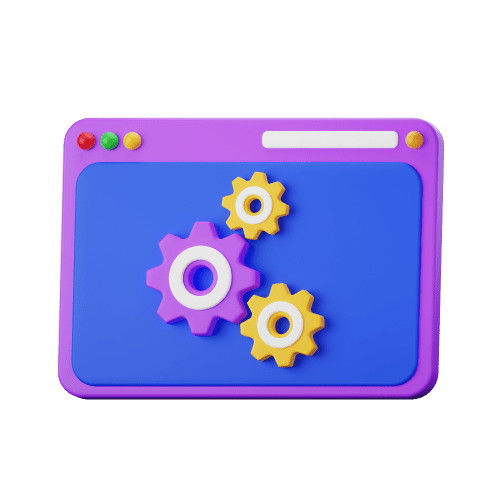
4. Testing & Quality Assurance
After development is finished, the software goes through a rigorous testing process to find any bugs or problems and fix them. To guarantee that the software is secure, reliable, and meets the needs of the client, quality assurance is essential

5. Deployment
The software can be deployed to the client's servers or the cloud after passing all tests and quality checks. To ensure a smooth transition and deal with any issues that may arise during deployment, the development team will collaborate with the client.

6. Maintenance & Support
The development team will continue to offer upkeep and support services to guarantee that it functions properly and that any problems are quickly fixed. This could entail performing bug fixes, updates, and routine maintenance.
Why Choose Us for Custom Software Development?
Expertise
Our team is made up of highly qualified software developers with years of experience who are authorities in their fields
Customization
We are aware that every business has different needs, and we mold our solutions to suit them
Quality Control
To ensure the highest quality of the final product, we make sure that each of our software development projects goes through a strict quality control process
Timely Delivery
We put a lot of effort into completing our projects on schedule because we know how important it is to stick to deadlines
Competitive Pricing
We provide custom software development services at a competitive price without sacrificing quality
Experience & Track Record
Experience is important when developing custom software. Our team of talented developers has a track record of success, having provided clients with cutting-edge solutions in a range of industries
Benefits of Bespoke Software Development
Simple integration
If commercial software will not work with existing and legacy applications. The business will need to make additional investments in purchasing software that will work with the current infrastructure. Custom software can be created to integrate with the environment it is intended for.
Profitability
Custom software development can generate revenue. Businesses that create their own software may own it and thus be able to sell or grant licenses to other organizations, depending on the specifics of the project.
Independence
Organizations that develop or commission the development of custom software must bear the cost of supporting and maintaining it. Each organization must carefully consider whether building or purchasing is preferable in light of how the equation turns out.
Efficiency
Without the need to modify or customize COTS applications, custom software is specifically designed to support processes quickly and productively.
Scalability
Custom software can expand as a company or industry develops and changes. Future needs can be evaluated by designers and developers as part of the requirements-gathering process. Instead of spending money on additional licenses or subscriptions for packaged applications, these factors can then be incorporated into the application.
Upgrades
You could indeed change anything you want whenever you want with custom software. When creating customized software, you are in charge of choosing new upgrades and features. You can add new functionalities to your software without waiting for new releases.
Boost Productivity With Expert Development
Get High-quality, Custom Software To Streamline Your Processes And Meet Your Goals.
Why Custom Software Development is Good For Your Business?
To make your business process work smooth and efficient we develop bespoke software. We outsource our software developers to Bespoke software development on a timely basis (weekly/monthly/yearly) for easy communication between clients and customers.
Developing strategized and bespoke software to meet your target goals, consumes lots of time. To relieve this headache of creating and developing any such custom software development you can easily hire our software developers for your business growth and use.
Our highly techno-expert software developer’s research, modify and reuse to create new ways of maintenance and development to simplify your work. Ease out this constant pressure of bespoke software development by outsourcing Nimap developers and bring your business plans into reality by giving them life.
Technologies and Platforms We Use

AngularJS

ReactJS

VueJS

JavaScript

CSS3

HTML5

.NET

Node.js

PHP

Java

Python

Express

Fastify

Meteor.js

Nest.js

Android

iOS

Swift

Flutter

Ionic

React Native

Xamarin

SQL Server

MySQL

PostgreSQL

MongoDB

Oracle

DynamoDB

SQLite

Firebase

Laravel

CodeIgniter

MEAN

CakePHP

Django

AWS

Google Cloud

Azure

Jenkins

Azure DevOps

Docker

Kubernetes

Selenium

Gradle

WooCommerce

Magento

Shopify

Kentico

NopCommerce

WordPress

Joomla

Kentico

DotNetNuke

Sitefinity

MS Dynamics

Zoho

Power BI

Salesforce

ServiceNow

Tableau
Real-World Case Studies of Our Impactful Solutions
NBFC Digi Gold Case Study
Investing in gold has been a traditional practice for many, especially homemakers and jeweler shop owners. Investing in gold has been a traditional practice for many, especially homemakers and jeweler shop owners.
Let Us Create Custom Software Solution That Fits Your Needs Perfectly.
100+ Technology Expertise | Fully Signed NDA | 40+ Time-Zone Support | 24×7 Tech Support | Extremely Competitive Costs
Our Enterprise Clients



















Why choose us for Enterprise Software Development?
With over years of commitment and dedication we bring out more than two decades of global client service experience to the table, these are some of the things we can offer you:
- Constant Participation
- Gradual Development
- One Point of Contact for Transferring Knowledge
- Timely hourly, monthly, and yearly services provided to our dear clients
- Accountability in service delivery
- Remote access to data from across the globe
Related Articles
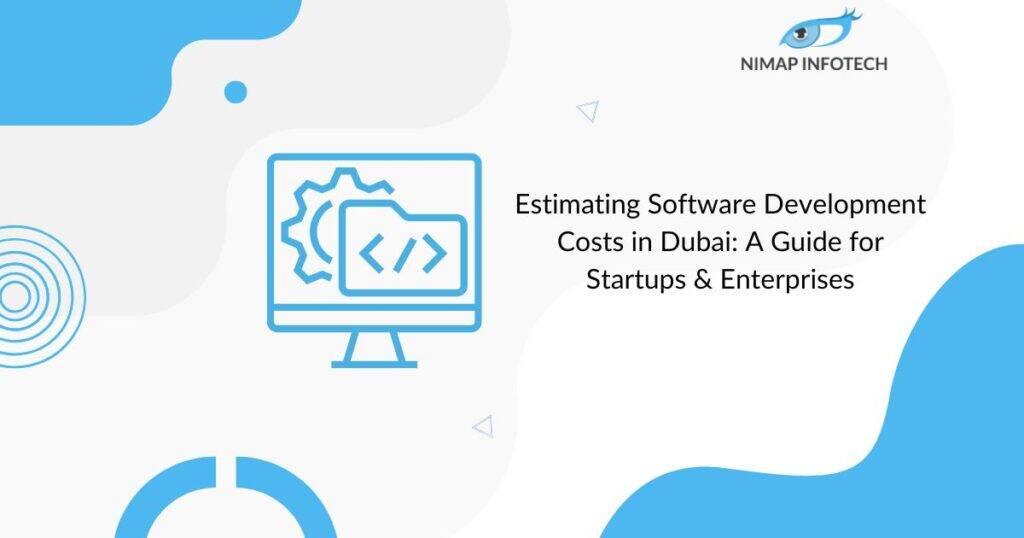
Estimating Software Development Costs in Dubai: A Guide for Startups and Enterprises
Dubai is rapidly establishing itself as a global software development hub, driven by the increasing adoption of Artificial Intelligence (AI), cloud computing, and custom software

The Ultimate Guide to AI in Travel & Hospitality Software Development
Artificial Intelligence (AI) is revolutionizing the hospitality and travel industry by transforming the way businesses operate, engage customers, and optimize their services. With its powerful

How Much Does Custom Software Development Cost in New York?
Investing in custom software development can significantly enhance your business’s efficiency by streamlining operations and creating new revenue opportunities. Additionally, this increases interaction with both
Clients Testimonials



Frequently Asked Questions
What Kind of Custom Software Development Services Are You Offering?
Nimap Infotech offers a wide range of custom software development services, including web application development, mobile app development, enterprise software solutions, e-commerce platforms, CRM systems, ERP solutions, and cloud-based applications tailored to specific business needs.
How Does Custom Software Development Benefit?
Custom software development offers tailored solutions that enhance efficiency, improve scalability, integrate seamlessly with existing systems, and provide a competitive edge by meeting specific business needs and optimizing workflows.
How Can I Ensure the Security and Confidentiality of My Project?
Ensure security and confidentiality at Nimap Infotech by implementing robust NDAs, using secure communication channels, conducting regular security audits, employing encryption, and working with experienced professionals who prioritize data protection.
What is the Process of Custom Software Development Consulting?
Custom software development consulting involves understanding client needs, conducting feasibility analysis, creating a detailed plan, designing solutions, iterative development, rigorous testing, deployment, and continuous support and maintenance.
What Type of Custom Software Development Services Do You Deliver?
Nimap Infotech delivers custom software development services, including web and mobile application development, enterprise software solutions, cloud computing, AI and machine learning integration, IT consulting, and ongoing support and maintenance.
How Does Nimap Infotech Help as a Custom Software Development Company?
Nimap Infotech helps by delivering tailored software solutions, enhancing operational efficiency, ensuring scalability, providing expert consulting, integrating advanced technologies, and offering continuous support to meet specific business requirements.









